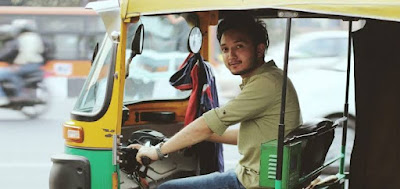Travelling in E-vehicles is cheaper, E-buses more comfortable, say Commuters
The introduction of E-Vehicles in Srinagar and elsewhere has eased the travel adversities across Srinagar where commuters believe that this mode of transport has eased the travel.
As per news agency—Kashmir News Observer (KNO), the e-buses were introduced under the Srinagar Smart City Limited (SSCL) Project whereas e-rickshaws were introduced independently.
SSCL has over 130 projects. One of the major ongoing projects is the introduction of e-buses on the roads of Srinagar and adjoining areas. The fleet of 100 buses was launched in November, 2023. Out of these, 75 will are operational within Srinagar district and 25 will connect the city with rest of the districts. The buses are currently plying on 14 routes in Srinagar. Two of the routes connect the city with district Budgam and expansion to Ganderbal district is also expected soon.
Hureen Mattoo, a college student, chooses e-rickshaw for her travel because she feels it is a comfortable mode of travel. “It does not consume much time and I feel comfortable, so I prefer e-rickshaws,” she said.
E-Rickshaws are mainly available for fixed routes of the city such as Jehangir Chowk-Dalgate and Maisuma-Bohri Kadal, etc. People have found it easy, less time consuming and cheap as compared to motor buses or rickshaws. These hit roads in the year 2022. The move received a warm welcome from commuters and was seen as a successful introduction.
“E-Rickshaws are smaller in size and they pass through traffic jams, helping me to reach faster to my destination,” said Aksa, who goes to office in e-rickshaws every day. “Besides, these run slowly as compared to other vehicles, so I feel safe.”
Besides, less time and convenience, the bus service has a mobile application, ‘Chalo’ app. The application has tracks, time table and locations of all the live buses. The commuters can use the application to check the timing of their location and board the bus accordingly. The buses have CCTV installed to avoid any untoward incidents.
Toiba Sadiq, a girl who goes to college and office in e-bus finds it easy due to the mobile application. “These e-buses are comfortable unlike the motor local buses,” said Toiba. “These buses are fast and do not take frequent and long halts.”
These electric vehicles not only proved to be beneficial for passengers, but also created livelihood for hundreds of unemployed men in the valley. The drivers and conductors for the e-buses are selected through official procedure. However, for e-rickshaws many people buy the vehicle and start earning. One of the notable advantage of these vehicles is that they do not burn any fuel, making them zero-emission and eco-friendly.
Umar Mir, 28, has been driving an e-rickshaw for a month now. Sharing his experience, he said, “It helps me earn way better than my previous job.” He used to drive a school van earlier. The price of an e-rickshaw goes in lakhs. “There are loans available in banks which help to get an e-rickshaw on EMI with down payment of as less as Rs 10,000,” said Umar.
The e-buses of SSCL have been launched by Bharat Vikas Group (BVG). The official work has been going on since six months as per a worker in the office. “I work in shifts here and it is a better work opportunity,” said Nadeem Manzoor, 26, who works as an e-bus guide. He previously worked as an accountant in a private company. Due to the shift system of work, he gets free by 2:00 pm and works part time from home. “In my previous job, I had to pay for fare and it hardly saved me a penny, however now my travel is free of cost and my savings are good too.”
Nadeem said, “There are around 336 conductors and 200 drivers currently working with SSCL e-bus service.” The man force is higher than the number of buses to keep them ready in case of any emergency such as a driver falling ill. According to him, there are 30-40 people employed in the official sector of e-buses. The drivers and conductors are working on a daily wage basis and the other employees are paid on a shift basis.
Fayaz Ahmed, a driver, working with SSCL expressed his gratitude over the work. He previously worked with SRTC bus service. He applied for this job as he finds it to be a “good opportunity.”
Tags:
TRANSPORT

